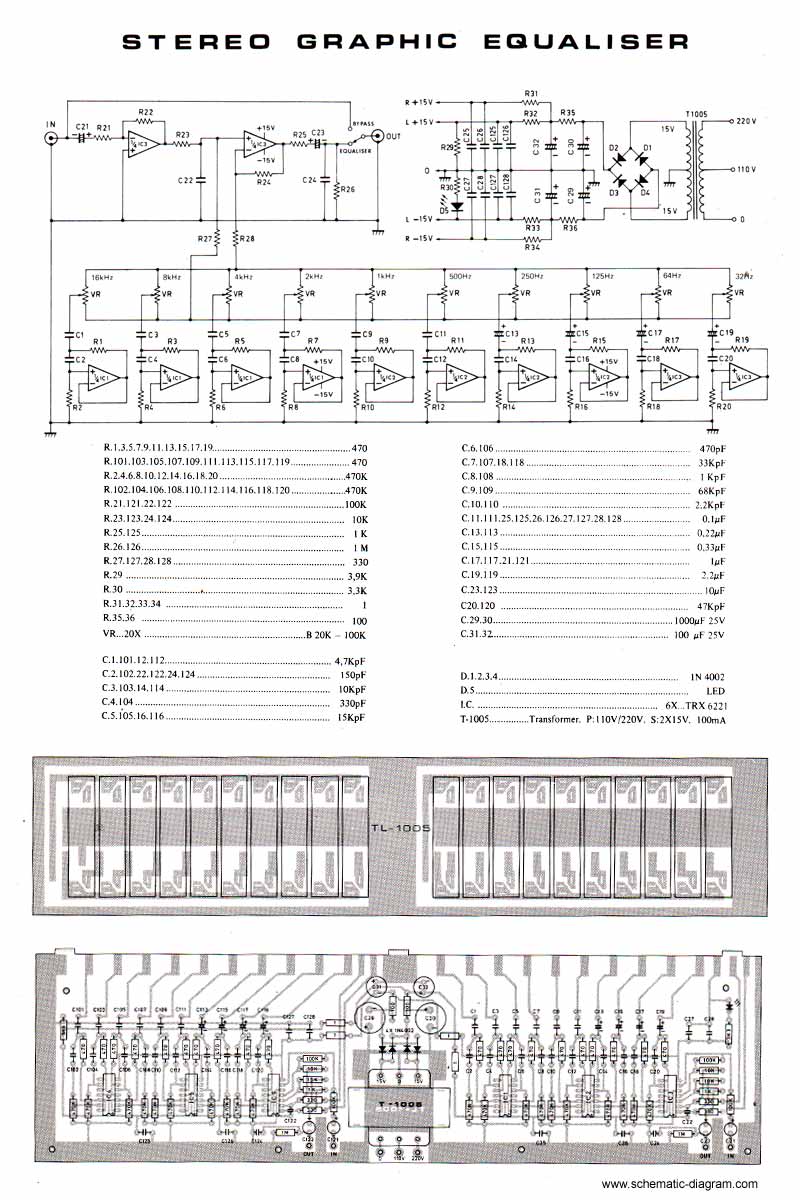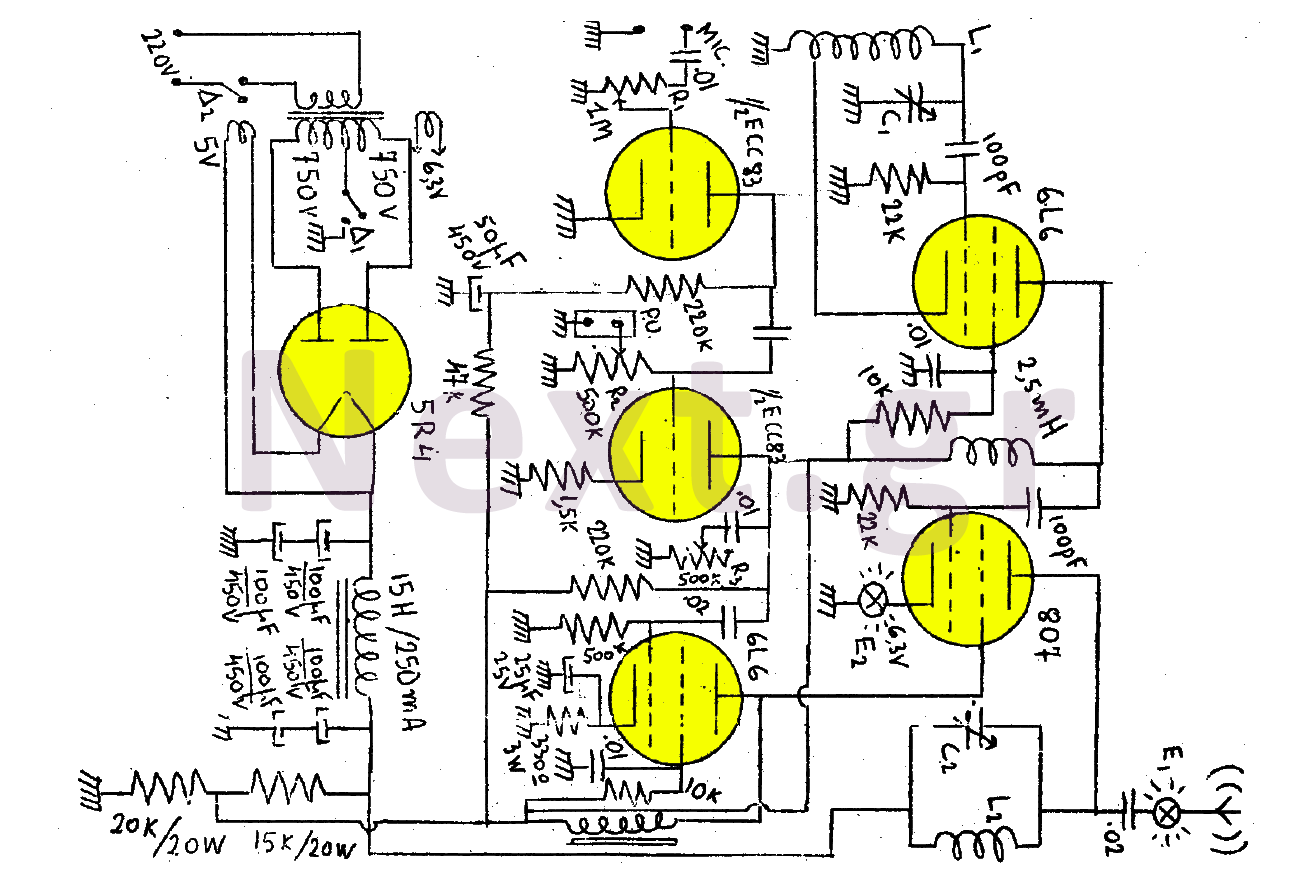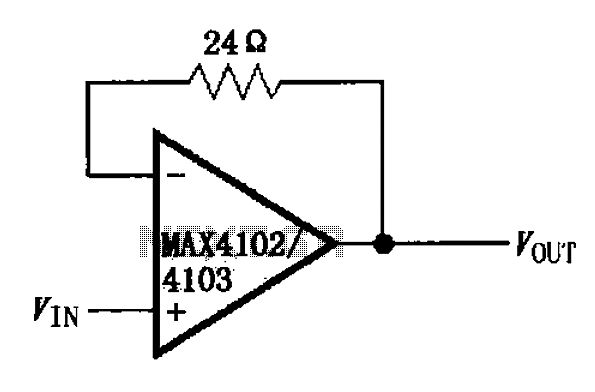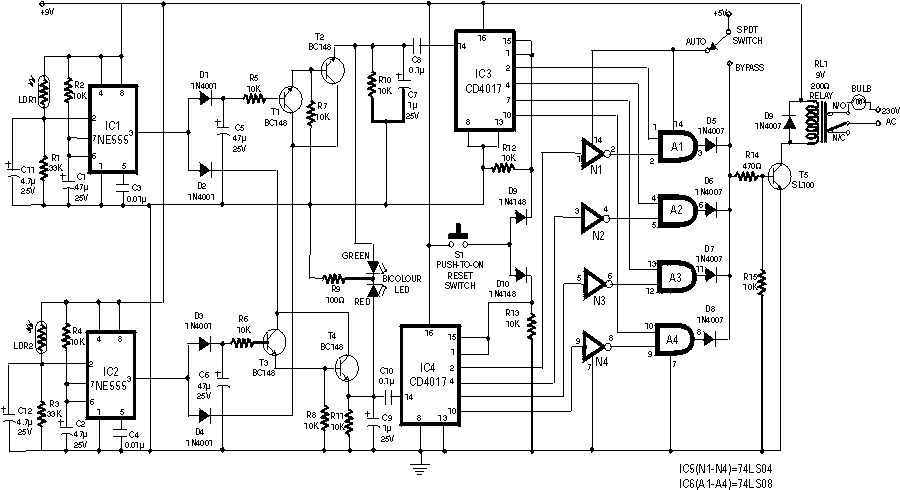
Low Noise 4 Channel Guitar Mixer Circuit
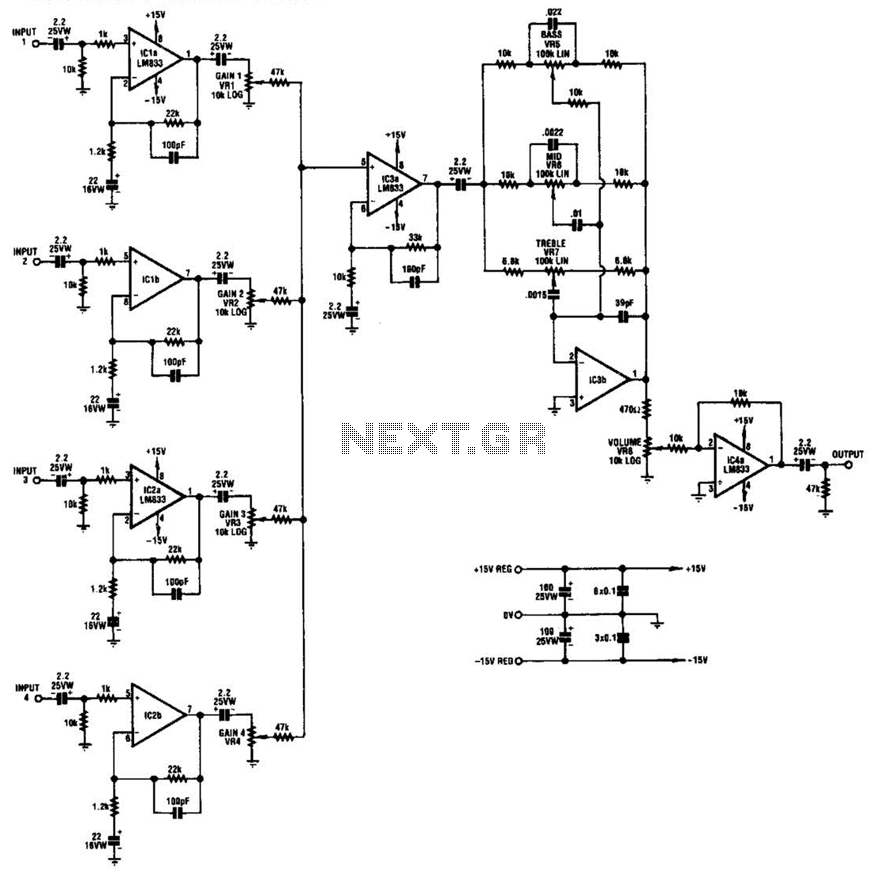
IC1-a, IC1-b, IC2-a, and IC2-b all operate with a gain of approximately 19. Their outputs are combined through level-control potentiometers, and the resulting signal is amplified by IC3-a before being sent to the tone-control stage IC3-b. Finally, the output from IC3-b is directed to a unity-gain buffer stage IC4-a through the volume-control potentiometer VR8.
The circuit described involves a multi-stage audio processing system designed to manipulate and control audio signals effectively. The initial stages consist of operational amplifiers IC1-a, IC1-b, IC2-a, and IC2-b, each configured to provide a gain of around 19. This gain is significant for amplifying weak audio signals to a more manageable level. The outputs from these amplifiers are then mixed together using level-control potentiometers, which allow for the adjustment of the relative levels of each signal before they are combined. This mixing process is crucial for achieving the desired audio balance and tonal quality.
The mixed output is then fed into IC3-a, which serves as an additional amplification stage. This stage further increases the signal level, preparing it for the subsequent tone-control stage, IC3-b. The tone-control stage is essential for shaping the audio signal by adjusting the frequency response, allowing for enhancements in bass, midrange, and treble frequencies according to the listener's preferences.
After the tone control, the output from IC3-b is routed to a unity-gain buffer stage, IC4-a. This buffer stage is critical in maintaining signal integrity and preventing loading effects that might occur if the tone-controlled signal were directly connected to subsequent stages or outputs. The inclusion of the volume-control potentiometer VR8 before this buffer stage provides an additional layer of user control, allowing for adjustments to the overall output level without altering the tonal characteristics established in the previous stages.
Overall, this circuit design illustrates a well-structured approach to audio signal processing, combining gain, mixing, tone control, and buffering to achieve a versatile and high-quality audio output. ICl-a, ICl-b, IC2-a, and IC2-b all function with a gain of about 19. Their outputs are mixed via the level-control pots and the resulting signal amplified by IC3-a and fed to tone-control stage IC3-b. Finally, the output from IC3-b is fed to unity-gain buffer stage IC4-a via volume-control potentiometer VR8.
The circuit described involves a multi-stage audio processing system designed to manipulate and control audio signals effectively. The initial stages consist of operational amplifiers IC1-a, IC1-b, IC2-a, and IC2-b, each configured to provide a gain of around 19. This gain is significant for amplifying weak audio signals to a more manageable level. The outputs from these amplifiers are then mixed together using level-control potentiometers, which allow for the adjustment of the relative levels of each signal before they are combined. This mixing process is crucial for achieving the desired audio balance and tonal quality.
The mixed output is then fed into IC3-a, which serves as an additional amplification stage. This stage further increases the signal level, preparing it for the subsequent tone-control stage, IC3-b. The tone-control stage is essential for shaping the audio signal by adjusting the frequency response, allowing for enhancements in bass, midrange, and treble frequencies according to the listener's preferences.
After the tone control, the output from IC3-b is routed to a unity-gain buffer stage, IC4-a. This buffer stage is critical in maintaining signal integrity and preventing loading effects that might occur if the tone-controlled signal were directly connected to subsequent stages or outputs. The inclusion of the volume-control potentiometer VR8 before this buffer stage provides an additional layer of user control, allowing for adjustments to the overall output level without altering the tonal characteristics established in the previous stages.
Overall, this circuit design illustrates a well-structured approach to audio signal processing, combining gain, mixing, tone control, and buffering to achieve a versatile and high-quality audio output. ICl-a, ICl-b, IC2-a, and IC2-b all function with a gain of about 19. Their outputs are mixed via the level-control pots and the resulting signal amplified by IC3-a and fed to tone-control stage IC3-b. Finally, the output from IC3-b is fed to unity-gain buffer stage IC4-a via volume-control potentiometer VR8.
